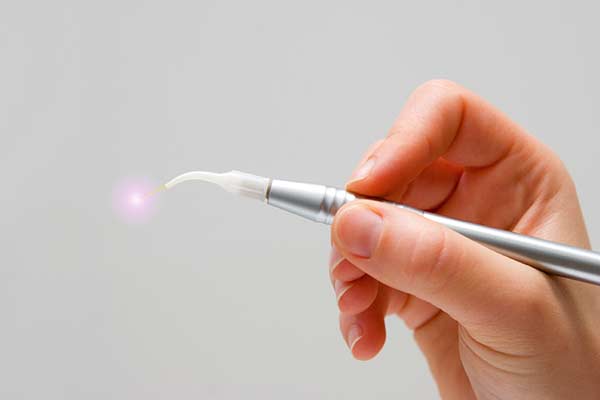Preventive and Diagnostic

An oral examination is a visual inspection of the mouth, head, and neck, performed to detect abnormalities. Radiographs allow for a more complete examination, helping the doctor to detect cavities, problems in existing dental restorations, gum and bone recession or other abnormal conditions within the mouth, head and neck area.
A dental cleaning, also known as an oral prophylaxis, is the removal of dental plaque and tartar (calculus) from the teeth. Specialized instruments are used to gently remove these deposits without harming the teeth. First, an ultrasonic device that emits vibrations and is cooled by water is used to loosen larger pieces of tartar. Next, hand tools are used to manually remove smaller deposits and smooth the tooth surfaces. Once all the tooth surfaces have been cleaned of tartar and plaque, the teeth are polished.
Many sports require athletes to use a Mouth Guard to protect their teeth while practicing and playing. Frequently used in contact sports, the mouth guard covers the gums and teeth to provide protection for lips, gums, teeth and arches. A properly fitted mouth guard can reduce the severity of dental injuries.
Pre-formed, ready-to-wear mouth guards can be purchased inexpensively at many sporting stores, but they do not always fit well. They can be uncomfortable and interfere with talking and even breathing.
Sporting goods stores also offer semi-custom mouth guards, in which the plastic is heated and then the athlete bites on it while still warm to provide some level of custom fit.
Your dentist can make a custom mouth guard by taking an impression of your teeth and then creating a device fitted to your mouth for the highest level of both comfort and protection. A custom fitted mouthguard can be particularly important for athletes who wear braces.
Be sure to bring your mouthguard to your dental appointments so your doctor can be sure it still fits you well.
Restorative

A crown is a dental restoration that completely covers the outside of a severely decayed tooth. Dental crowns can be completed in two visits. During the first visit, the tooth is prepped (shaved down) and an impression is taken. A temporary crown is placed while the permanent crown is being made. During the second visit, the permanent crown is fitted comfortably and then cemented into place for a permanent restoration.
A bridge replaces missing teeth without the use of a denture or dental implant. A false tooth is held in place by being attached to a neighboring tooth. In order to fabricate a bridge, crowns are made for the teeth on either side of the space and a false tooth is placed in between the crowns, which act as supports.
Porcelain veneers are thin pieces of porcelain used to recreate the natural look of teeth. To place a veneer, a very small amount of the original tooth enamel must be removed. Afterwards, an adhesive layer is placed between the slightly prepped tooth and the veneer. The veneer is then hardened with a curing light.
Dental implants are the replacement of tooth roots in the mouth. Implants provide a strong foundation for fixed or removable replacement teeth. Dental implants, which are placed in the jawbone, are small anchors made of a biocompatible metal called titanium. The anchors begin to fuse with the bone over the course of a few months. After the fusing process, known as osseointegration, abutment posts are inserted into the anchors to allow for the permanent attachment of the replacement teeth.
A denture is a removable replacement for missing teeth. There are two types of dentures: Complete (Full) and Partial Dentures.
Complete (Full) Dentures are made after all the teeth in the upper and/or lower jaw have been removed and the gum tissue has healed. The denture includes an acrylic base that is custom made in the dental laboratory and is made to look like natural gums. The denture sits over the gums or can be anchored to dental implants.
Removable Partial Dentures are made when only a few teeth need to be replaced. Removable partial dentures either attach to crowns on either side of the denture or to a metal framework that is then attached to the teeth on both sides of the partial denture. When worn during the day, removable partial implants can also be supported in place by dental implants. As opposed to being removable, partial dentures can also be anchored in place by being attached to dental implants.
Cosmetic

Whitening, also known as bleaching, is the procedure used to brighten teeth. Bleaching usually requires only one office visit. A protective gel or a rubber shield is placed over the gums to protect the soft tissue. A bleaching agent containing carbamide peroxide is applied to the teeth, and a laser light is then used to enhance the action of the whitening agent .
Additional Services

Scaling and root planing is a non-surgical procedure used to treat gum disease. During the scaling process, specialized dental instruments are used to remove dental plaque and calculus from beneath the gums. Planing is the procedure used to smooth the tooth’s root after the scaling process. Root planing helps the gums heal and reattach themselves to a cleaner and smoother root surface.
The temporomandibular joint (TMJ) is similar to a sliding hinge that connects your jawbone to your skull. TMJ disorders can cause pain in the jaw joint and in the muscles that control jaw movement.
To treat TMJ disorders, first the cause has to be identified. In less severe cases TMJ disorders can be treated with self-managed care (eating soft foods, using ice packs, avoiding extreme jaw movement) or nonsurgical treatments (anti-inflammatory medications, Botox injections, stabilization splints).
Oral Appliance Therapy (OAT) is often an effective alternative to CPAP for patients suffering from obstructive sleep apnea. With this approach, our office creates a custom-fitted oral appliance for patients to wear when they are sleeping. The appliance aids patients during sleep by positioning the lower jaw and tongue in a way that minimizes airway obstruction.
Specialized Techniques

CAD/CAM is an acronym that stands for computer-aided design/computer-aided manufacturing. CAD/CAM technology is used to help the dental team fabricate precise shapes and sizes for dental restorations including inlays, onlays, crowns and bridges. This technology provides patients with durable, esthetic, well-fitted single and multiple tooth restorations in a more efficient manner. The first step in using CAD/CAM technology is tooth preparation. Next, a digital impression is taken that sends the prepared tooth’s exact dimensions into a computer. Afterwards, the computer software creates a virtual restoration replacement part for the missing areas of the tooth. The software then sends the virtual restoration data to the milling machine, where the replacement part is carved out of a solid block of ceramic or composite resin. The restoration is adjusted in the patient’s mouth and cemented or bonded in place.
